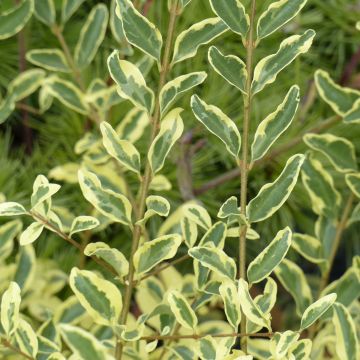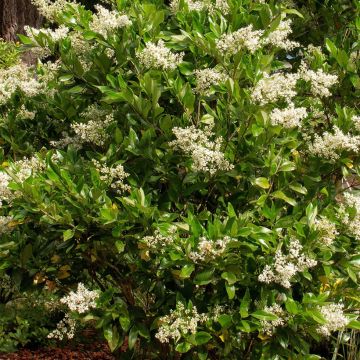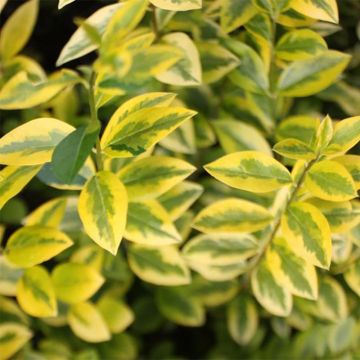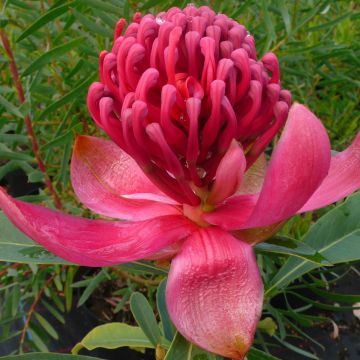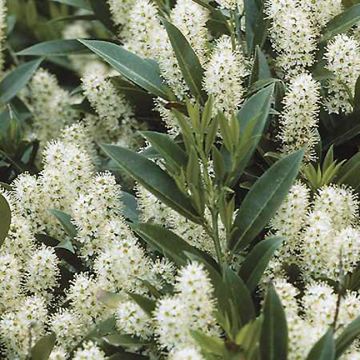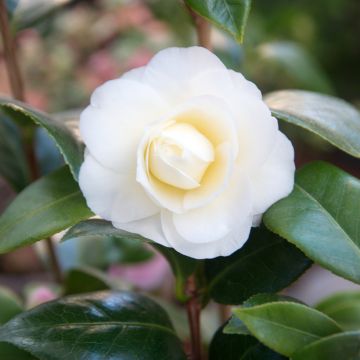

Ligustrum japonicum Texanum - Japanese Privet
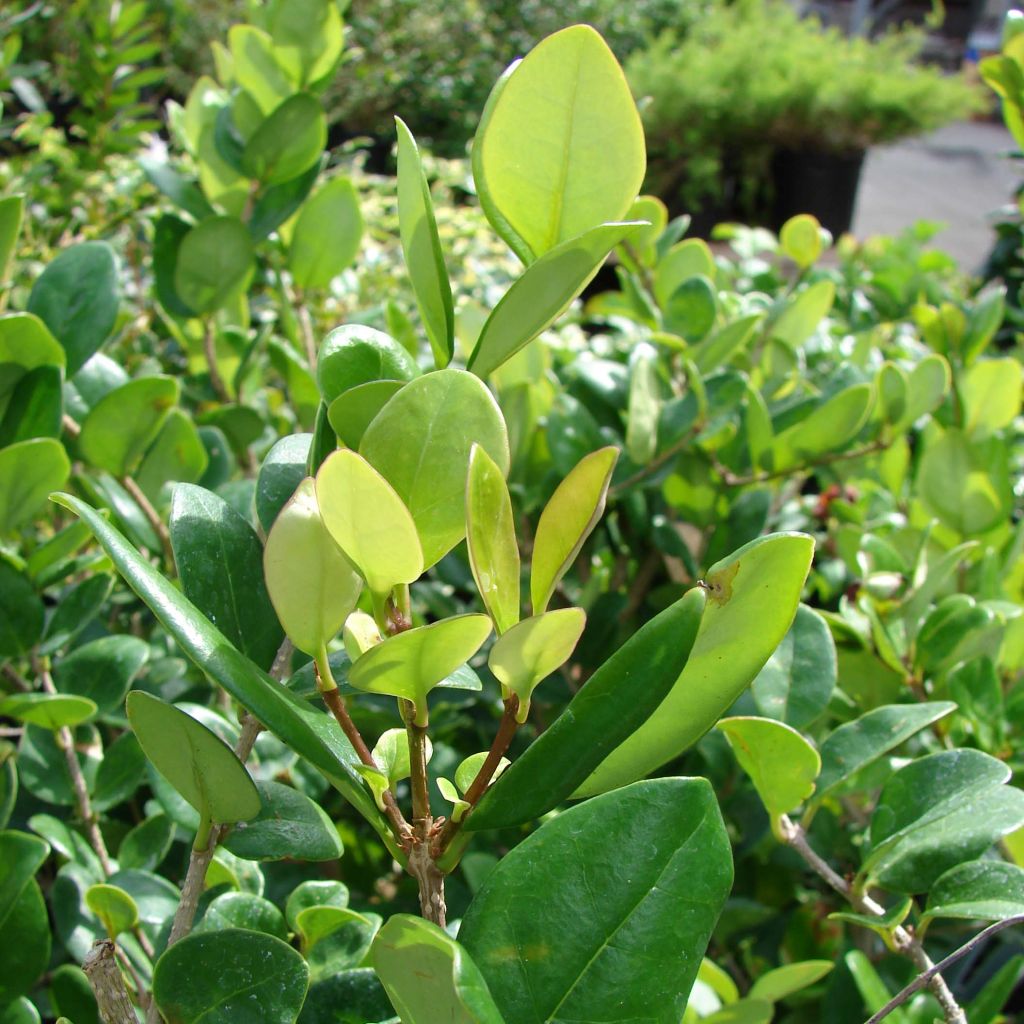

Ligustrum japonicum Texanum - Japanese Privet
Ligustrum japonicum Texanum - Japanese Privet
Ligustrum japonicum Texanum
Japanese Privet
This item cannot be shipped to the selected country
Delivery charge from €5.90
Delivery charge from €5.90
Delivery to Corse prohibited
More information
Schedule delivery date,
and select date in basket
This plant carries a 24 months recovery warranty
More information
We guarantee the quality of our plants for a full growing cycle, and will replace at our expense any plant that fails to recover under normal climatic and planting conditions.
From €5.90 for pickup delivery and €6.90 for home delivery
Express home delivery from €8.90.
From €5.90 for pickup delivery and €6.90 for home delivery
Express home delivery from €8.90.
Delivery to Corse prohibited: UE law prohibits the import of this plant from mainland France to Corse as part of the fight against Xylella fastidiosa. Please accept our sincere apologies.
More information

Does this plant fit my garden?
Set up your Plantfit profile →
Description
Ligustrum japonicum 'Texanum', commonly known as the Texas Privet, is an excellent cultivar of Japanese Privet that originated in a Texan nursery and was introduced to the horticultural market in 1954. This beautiful bush is still widely planted in regions with mild winters, both in gardens and green spaces. Often used to create single-species hedges due to its dense evergreen foliage, this bush, when left unpruned, offers an ornamental summer flowering with large clusters of white-cream flowers, sometimes with a slightly overpowering scent. Then come its beautiful clusters of black berries, which are enjoyed by birds. Whether placed at the back of a border or in a free-standing hedge, its bold and lush green silhouette is always striking. In summary, this Texas Privet is a sturdy hedge plant as well as an excellent garden bush, pleasant in all seasons.
Ligustrum japonicum 'Texanum' is a horticultural creation with somewhat obscure origins. It is undoubtedly descended from Japanese Privet, an evergreen bush native to Japan, as its name suggests. The plant, which grows relatively slowly, naturally has an upright and dense habit. When left unpruned, this bush reaches an average height of 4.5m (15ft) with a spread of 2.5m (8ft), sometimes up to 6m (20ft) depending on growing conditions. The branches bear mostly evergreen leaves (deciduous in cold climates), which are leathery, opposite, entire, ovate, 8 to 10cm (3 to 4in) long, and thick and glossy on the upper surface. Each leaf appears folded in half along the very pronounced midrib. The young shoots, with their acidic green colour, contrast beautifully with the older foliage, which is a deep and rich green. From May to July, depending on the region, conical 10cm (4in) long panicles composed of small white flowers bloom on the current year's growth. Their scent, sometimes considered slightly sour, attracts many pollinating insects. They give way to small black berries, provided no pruning is done after flowering. The bark of the Texas Privet is grey, dotted with white lenticels. It should be noted that all parts of the privet are toxic to humans if ingested. Moderately hardy, this Texan Japanese Privet is often considered sensitive to temperatures below -5 to -7°C (23 to 19.4°F), which cause it to lose its foliage. Once established, however, it can withstand brief frosts of around -12°C (10.4°F), with new foliage appearing in spring.
Privet is an easy-going bush. A godsend for uninspired gardeners, valued for adding a precise, orderly, reassuring note to the structure of the garden, it has the advantage of bringing a touch of luxuriance and life to neglected areas. Perfect for creating topiaries, it will capture attention for a good part of the year with its beautiful flowering, fruits, and foliage that is full of character, while also preserving privacy and providing shelter for many small beneficial garden creatures. It deserves the honour of being allowed to grow freely, in a grove of humble but very useful bushes with colourful foliage and fruits, such as the wayfaring tree, cotoneaster, firethorn, holly, elaeagnus, deciduous or evergreen spindle trees, brooms, viburnum, and bay laurel. Be inspired!
Report an error about the product description
Ligustrum japonicum Texanum - Japanese Privet in pictures




Plant habit
Flowering
Foliage
Botanical data
Ligustrum
japonicum
Texanum
Oleaceae
Japanese Privet
Cultivar or hybrid
Other Ligustrum - Privet
Planting and care
Plant in spring in cold regions or in autumn in mild climates, with a spacing of 80cm (32in) to form a hedge. Choose a sunny to partially shady exposure, or even shady in hot and dry climates. Dig a hole over twice the size of the pot, loosen the bottom, and add a large handful of potting soil or mix slow-release fertiliser with loose soil. The roots of this bush can rot in winter if the soil is too wet and poorly drained. Water well, especially in the first summers, mulch the soil to keep it moist, and prune the branches by half to stimulate new shoots. Once established, this bush does not require watering in summer if it is planted in sufficiently deep soil that retains some moisture. The hardiness of a mature specimen is around -12°C (10.4°F) for a short period.
Pruning is not necessary in an informal hedge, as it will compromise flowering or fruiting if done at the wrong time. In a formal hedge, on the other hand, shorten the new shoots by half each year to promote branching of your plant. Do this after flowering in June or July so that the new shoots hide the unsightly leaves cut in half by the hedge trimmer. Privets are fairly resistant to pests and diseases. However, they can be affected by weevil larvae or caterpillars.
Planting period
Intended location
Care
-
, onOrder confirmed
Reply from on Promesse de fleurs
Evergreen shrubs
Haven't found what you were looking for?
Hardiness is the lowest winter temperature a plant can endure without suffering serious damage or even dying. However, hardiness is affected by location (a sheltered area, such as a patio), protection (winter cover) and soil type (hardiness is improved by well-drained soil).

Photo Sharing Terms & Conditions
In order to encourage gardeners to interact and share their experiences, Promesse de fleurs offers various media enabling content to be uploaded onto its Site - in particular via the ‘Photo sharing’ module.
The User agrees to refrain from:
- Posting any content that is illegal, prejudicial, insulting, racist, inciteful to hatred, revisionist, contrary to public decency, that infringes on privacy or on the privacy rights of third parties, in particular the publicity rights of persons and goods, intellectual property rights, or the right to privacy.
- Submitting content on behalf of a third party;
- Impersonate the identity of a third party and/or publish any personal information about a third party;
In general, the User undertakes to refrain from any unethical behaviour.
All Content (in particular text, comments, files, images, photos, videos, creative works, etc.), which may be subject to property or intellectual property rights, image or other private rights, shall remain the property of the User, subject to the limited rights granted by the terms of the licence granted by Promesse de fleurs as stated below. Users are at liberty to publish or not to publish such Content on the Site, notably via the ‘Photo Sharing’ facility, and accept that this Content shall be made public and freely accessible, notably on the Internet.
Users further acknowledge, undertake to have ,and guarantee that they hold all necessary rights and permissions to publish such material on the Site, in particular with regard to the legislation in force pertaining to any privacy, property, intellectual property, image, or contractual rights, or rights of any other nature. By publishing such Content on the Site, Users acknowledge accepting full liability as publishers of the Content within the meaning of the law, and grant Promesse de fleurs, free of charge, an inclusive, worldwide licence for the said Content for the entire duration of its publication, including all reproduction, representation, up/downloading, displaying, performing, transmission, and storage rights.
Users also grant permission for their name to be linked to the Content and accept that this link may not always be made available.
By engaging in posting material, Users consent to their Content becoming automatically accessible on the Internet, in particular on other sites and/or blogs and/or web pages of the Promesse de fleurs site, including in particular social pages and the Promesse de fleurs catalogue.
Users may secure the removal of entrusted content free of charge by issuing a simple request via our contact form.
The flowering period indicated on our website applies to countries and regions located in USDA zone 8 (France, the United Kingdom, Ireland, the Netherlands, etc.)
It will vary according to where you live:
- In zones 9 to 10 (Italy, Spain, Greece, etc.), flowering will occur about 2 to 4 weeks earlier.
- In zones 6 to 7 (Germany, Poland, Slovenia, and lower mountainous regions), flowering will be delayed by 2 to 3 weeks.
- In zone 5 (Central Europe, Scandinavia), blooming will be delayed by 3 to 5 weeks.
In temperate climates, pruning of spring-flowering shrubs (forsythia, spireas, etc.) should be done just after flowering.
Pruning of summer-flowering shrubs (Indian Lilac, Perovskia, etc.) can be done in winter or spring.
In cold regions as well as with frost-sensitive plants, avoid pruning too early when severe frosts may still occur.
The planting period indicated on our website applies to countries and regions located in USDA zone 8 (France, United Kingdom, Ireland, Netherlands).
It will vary according to where you live:
- In Mediterranean zones (Marseille, Madrid, Milan, etc.), autumn and winter are the best planting periods.
- In continental zones (Strasbourg, Munich, Vienna, etc.), delay planting by 2 to 3 weeks in spring and bring it forward by 2 to 4 weeks in autumn.
- In mountainous regions (the Alps, Pyrenees, Carpathians, etc.), it is best to plant in late spring (May-June) or late summer (August-September).
The harvesting period indicated on our website applies to countries and regions in USDA zone 8 (France, England, Ireland, the Netherlands).
In colder areas (Scandinavia, Poland, Austria...) fruit and vegetable harvests are likely to be delayed by 3-4 weeks.
In warmer areas (Italy, Spain, Greece, etc.), harvesting will probably take place earlier, depending on weather conditions.
The sowing periods indicated on our website apply to countries and regions within USDA Zone 8 (France, UK, Ireland, Netherlands).
In colder areas (Scandinavia, Poland, Austria...), delay any outdoor sowing by 3-4 weeks, or sow under glass.
In warmer climes (Italy, Spain, Greece, etc.), bring outdoor sowing forward by a few weeks.

































